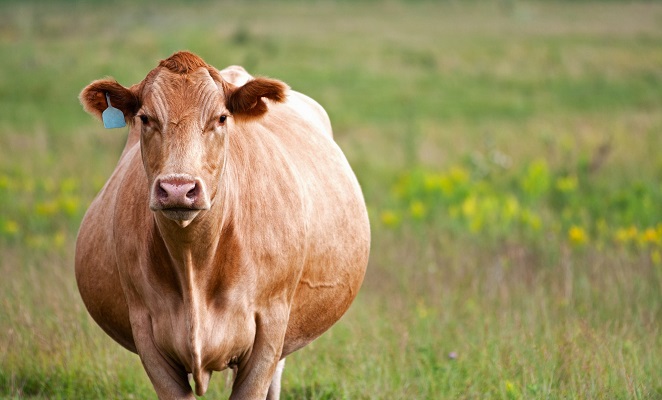

Pregnant animals should be watched carefully, particularly during the last stages of pregnancy to avoid abortion due to fights or other physical trauma.During early stages of pregnancy, there is no need of special feeding for heifers. The system of feeding and management recommended for heifers before breeding may continue.
During last three months of pregnancy when fetal growth is very rapid, a special pregnancy allowance of about 1-2 Kg of concentrate should be offered.Special care should be taken regarding mineral and vitamin deficiencies because they can have a serious adverse effect on the newborn calf.
Feeding trace mineralized salt plus recommended amounts of calcium and phosphorus is usually sufficient to avoid these problems. Care must be taken that calcium and phosphorus should not be taken in excessive amounts.During the last few weeks of pregnancy there is a tendency of prolapse of vagina which may be caused by constipation, mineral deficiency and debility.
Balanced and laxative rations should be fed to maintain the normal tone of the reproductive tract.Some time udder edema occurs before calving. This can be avoided by moderate exercise for a half an hour, two to three times per day. Massaging the udder for a few minutes is also helpful.
Use of diuretics and prepartum milking may be helpful in severe cases.Isolate the pregnant animal 8-10 days before the expected date of calving and keep it in a clean well bedded, dry and disinfected maternity pen. The animal should be watched closely as calving time approaches at least every two to three hours.
A good calving environment reduces the exposure of cows and newborn calves to infectious disease.A clean and comfortable area that provides cows with good footing minimizes the potential for injuries. Calving areas should be landscaped to allow for adequate drainage.
Shade structures are recommended.Calves are usually born without assistance. Any abnormality in their presentation requires immediate attention by a competent person to correct the position of the calf so that it can be delivered. Strict sanitation must be observed during assistance.
After removal of calf, milk animal it will help in removal of placenta. Placenta is normally expelled within 2 to 6 hours after calving. If placenta fails to be expelled with 12 hours it is considered retained placenta. In case of retained placenta veterinarian should be called for its removal.After normal birth, the dam is alert and willing to eat and drink within one or two hours of calving.
Warm water and some wheat bran should be offered to dam after calving. It is necessary to encourage the dairy animals to rise and to move to the manger for feeding after calving, especially on the day of calving and the first 2 days after calving.The animal should be closely watched for health problems after calving. In addition to observing feed intake and milk production, rectal temperature and ketone levels should be monitored daily.
 Contact Jaguza Support
Contact Jaguza Support